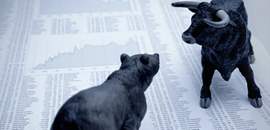- Like Brexit, the 2016 U.S. elections surprised most investors, with Donald Trump’s stunning victory over Hillary Clinton while the Republicans retained control of both houses of Congress. The immediate effect is likely to be heightened market volatility due to increased political uncertainty.
- Meanwhile, market participants will assess the economic policies of the Trump Administration. Trump campaigned on a platform of comprehensive tax reform that would result in lower tax rates for individuals and corporations, which should appeal to equity investors. However, he also favors increased spending on the military and infra-structure, but does not seek changes in entitlement programs. If so, outsized budget deficits could lead to higher government bond yields.
- More controversial is Trump’s stance on trade. It is hard to tell whether it is a negotiating tactic to obtain better trade deals, or whether he would increase tariffs and quotas on certain countries that would invite retaliation.
- We are not altering our investment strategy because of the election, but are adopting a “wait and see” posture. We are maintaining a moderate overweight to credit risk in bond portfolios and are positioned somewhat defensively in equities as the Fed is poised to raise interest rates in December.
Increased Market Volatility
The initial response to Trump’s victory has been a selloff in global equity markets (which was subsequently reversed intraday) and a spike in U.S. government bond yields. This is to be expected considering markets were pricing in a victory for Hillary Clinton based on numerous polls and political pundits who underestimated the dissatisfaction of the U.S. electorate with the status quo. With the electorate voting for political change and the Republican Party in control of both houses of Congress, the gridlock in the U.S. government of the past six years is finally over.
While that is good news for many people, it also means that markets will have to assess where U.S. economic policies are headed in the next four years. We should find out by early next year once Trump’s Cabinet is in place. Normally, there is a honeymoon period of 100 days or so for a new President to unveil the legislative agenda for the first term. For this reason, incoming Presidents rush to get as much legislation passed in this period as they can, knowing that chances for compromise become smaller with the passage of time.
The changes Trump and Republican leaders in Congress are considering are widespread: They include tax reform for corporations and individuals, increased spending for the military and infrastructure, reduced government regulations, and ending Obamacare, among others. In addition, Trump is seeking to renegotiate existing trade deals and defense arrangements with U.S. allies. Amid all this, we expect markets to be more volatile than they have been since mid-year.
Proposed Changes in Tax Policy & Fiscal Policy
One of the most important changes Trump is likely to undertake is comprehensive reform of the tax code for both individuals and corporations. His goal is to broaden the tax base in order to lower marginal tax rates. As I noted in a previous post, Trump’s proposals are reminiscent of the “supply-side” policies that President Reagan pursued in the 1980s (“Trump Economics: Reaganomics with a Dose of Mercantilism” September 22). His goal is to revive the American economy and restore economic growth back to its long-term trend rate of 3.5%. In his view, pro-growth strategies that lower and simplify tax rates combined with significant reductions in regulatory burdens businesses face are the keys to success.
On the spending side of the ledger, Trump has pledged to increase military expenditures and he favors increased spending on infrastructure projects. However, in contrast to the Republican leaders in Congress, he does not want to pare back entitlement reforms such as social security and Medicare and Medicaid, which budget experts believe is essential to rein in future deficits.
Trump’s stance raises two issues: (i) Will the Republican leadership in Congress acquiesce and scrap plans for entitlement reform? And (ii) If so, by how much will the federal budget deficit expand? While Trump has proposed to cut back spending on other programs by 1% over the next ten years, most budget experts believe it would not be sufficient to prevent a major increase in U.S. budget deficits for the foreseeable future.
Investors, therefore, need to weigh the prospects for reviving U.S. economic growth versus the specter of outsized budget deficits in the next four years. During the Reagan era, the outcome was favorable for financial markets, mainly because the Federal Reserve succeeded in lowering inflation and inflation expectations; consequently, bond yields fell in nominal terms (due to lower inflation). The outcome is likely to be different this time, however, because interest rates are near record lows and the Fed is poised to raise them. Therefore, we would expect government bond yields to rise if budget deficits were to increase materially. The impact on the stock market would depend on whether faster revenue growth associated with fiscal stimulus would offset the impact of higher interest rates.
A Critical Difference: Trade & Exchange Rate Policies
As I have also noted before, the biggest difference in policies favored by Donald Trump from those of Ronald Reagan has to do with trade and exchange rate policies. Whereas Reagan supported free trade and a strong dollar, Trump has a mercantilist view of the world, in which U.S. trade deficits are perceived to be a sign of economic weakness, and trade deals are a source of lost jobs in manufacturing.
Having heard Trump speak at the Economic Club of New York, I believe he is adamant on this issue and not bluffing. What is harder to tell, however, is whether his tough stance on trade and globalism is mainly a bargaining ploy to negotiate better terms for the U.S. or something he is prepared to act upon. On this issue, Trump is at odds with the Republican leaders in Congress, who favor free trade. However, trade policy is an area where the president can act unilaterally. For example, the president has authority to impose temporary tariffs of up to 15% on countries that are deemed to engage in “unfair practices” and also to take retaliatory action against “discriminatory” trade practices.
One of the first indications will be proposals Trump puts forth for renegotiating NAFTA and whether he asks the Treasury to declare China to be a currency manipulator. In my view, they will serve as litmus tests on how far he is prepared to go on trade issues and whether he would risk a possible trade war.
Positioning Investment Portfolios
Weighing these considerations, we are not altering our investment portfolios in the wake of this year’s election results, but we are adopting a “wait-and-see posture.” We are maintaining a moderate overweight of credit risk in bond portfolios, because we assess the risk of recession to be low, but we are positioned somewhat defensively in equity portfolios because valuations are not compelling, earnings have been soft, and there is a risk of Fed tightening in December.



















